Pulse panel: Guidelines or tramlines?
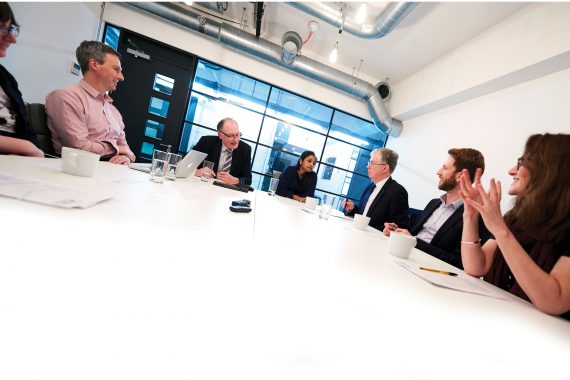
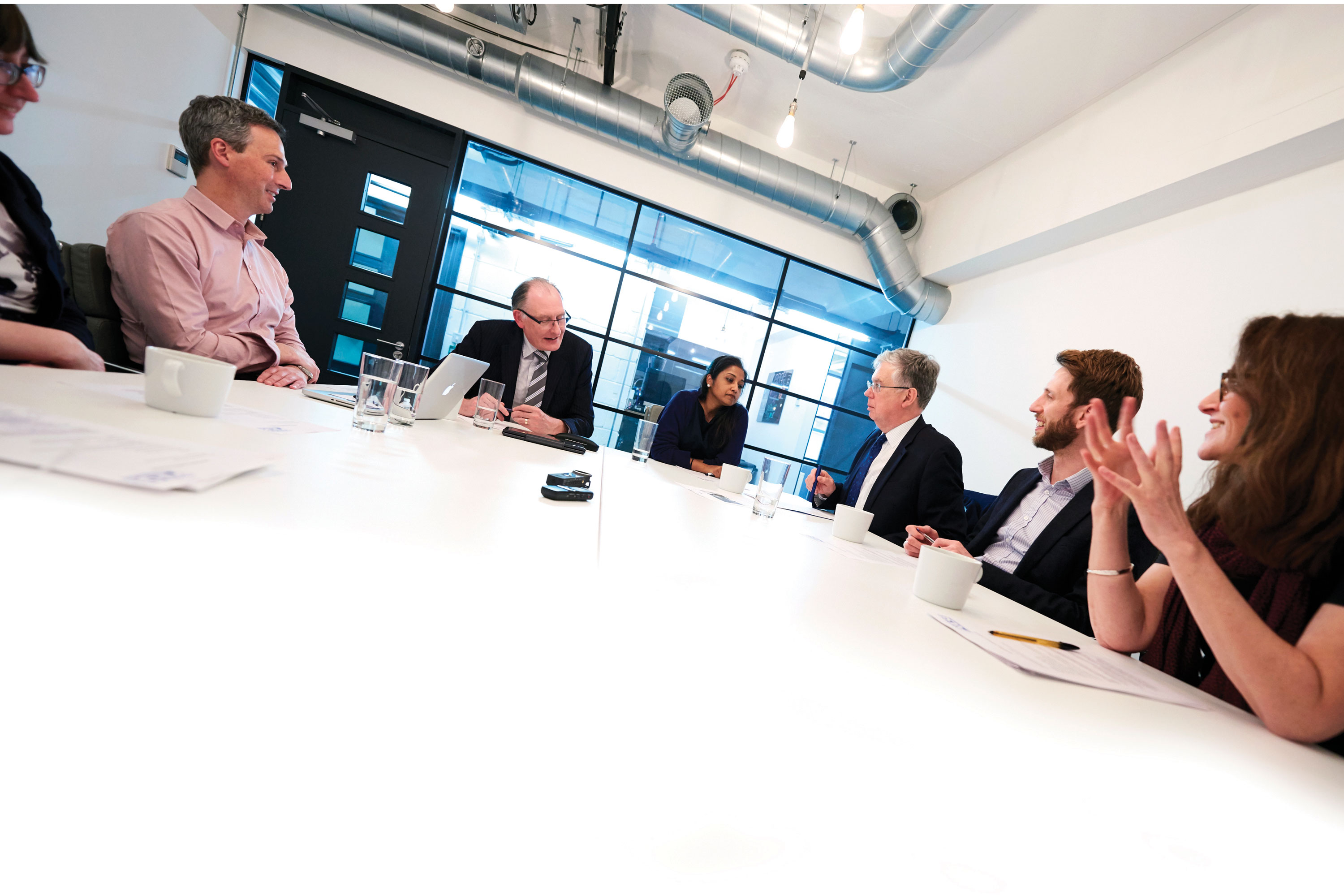
NICE round table, June 2017 – 3×2
- Chair: Nigel Praities (NP) Pulse editor
- Professor David Haslam (DH) NICE chair
- Dr Rebecca Payne (RP) RCGP Wales chair
- Dr Andrew Green (AG) GP in East Yorkshire and chair of GPC clinical and prescribing subcommittee
- Dr Julian Treadwell (JT) GP in Wiltshire and vice-chair RCGP Overdiagnosis Group
- Dr Keith Hopcroft (KH) GP in Basildon, Essex, and clinical adviser at Pulse
- Dr Pallavi Bradshaw (PB) Senior medicolegal adviser at Medical Protection
- Dr Judith Richardson (JR) NICE deputy medical director
In recent years it has become fashionable to deride ‘experts’. And general practice has not escaped the prevailing tide, with recent guidelines from NICE described as ‘bonkers’ or ‘dangerous’.
A particular low point came three years ago, when NICE proceeded with its 10% primary prevention risk threshold for statins despite almost unanimous opposition from the profession. This was followed up with controversial guidelines on cancer, asthma and diabetes.
But guidelines cannot just be ignored. They are held up as the yardstick by which the quality of general practice is measured. There is also a constant threat of legal action if GPs do not follow them.
And with approximately two million pieces of new medical research being produced a year that are of relevance for medical practice, someone has to gather this information and synthesise it so that GPs are able to give their patients the best available care.
Pulse convened an expert panel to discuss the use of guidelines in clinical practice, and how the communication of guidelines – rather than tramlines – could be improved. Here is a summary of the discussion.
NP Why are guidelines needed at all?
AG They are like mobile phones. We all managed without them in the 1980s, but the idea of going without them now just seems absurd. It’s having the wisdom to know when to use them and when not to. We’re not averse to guidelines, but I think it depends how they’re done, how relevant they are and whether you can feel that you’ve got a sense of ownership over them.
DH Before I become chair of NICE, I chaired a committee that looked at accrediting other guideline producers and we found an extraordinary number of well-known guidelines were basically produced by two men and a dog sitting around a table saying what they thought ‘good’ looked like. What we try to do is produce guidelines that can be trusted, but of course we’re not the only people.
NP Is there any evidence that guidelines can harm, as well as benefit care?
AG You have to distinguish between a guideline causing harm and somebody using the guideline as an excuse to cause harm. We all have anecdotes of guidelines being applied inappropriately, but I’m not necessarily sure that’s the guidance’s fault. I think that’s a fault of medical education not being as empowering as it should be. One of the things I find myself doing with trainees in the practice is giving them permission to go outside guidance in clinical care.
RP That’s a key point. It is very much dependent on the confidence of the doctor. Out of hours, when you’re presented with an unknown patient in the middle of the night and no relatives are available, it’s very easy to bounce them into hospital. It might not be the best thing, but I’m not aware of a single GP who’s had a letter from their medical director saying: ‘You should not have admitted this patient’.
JT Unintentionally, guidelines have moved from being very clear and easy to follow, to something that feels very prescriptive and inflexible. The job moving forwards is how to turn it into something that’s more nuanced and usable and applicable to individuals, rather than whole populations.
NP Patients don’t walk into the GP surgery as a number, yet that’s how all algorithms seem to start. How can guidelines be more applicable to different patients?
DH On every single NICE guideline there is a really important paragraph about taking into account the views of your individual patient and treating the person holistically.

NICE round table, June 2017 – 330×330
Professor David Haslam (centre)
KH I hate that paragraph, it’s so patronising.
DH I understand that, but the wording is tricky because we have to be absolutely legally watertight. I’d like to work out an ergonomic way of making people take it on board and not just zap past it.
KH Isn’t there an argument for a paragraph acknowledging the fact that in the hurly-burly world of general practice, where we see patients with multiple symptoms (sometimes with multiple patients in one consultation) these guidelines may not be applicable?
RP The problem isn’t the guidance, it is trying to implement it in a 10-minute consultation. For many of our older patients you can’t do it properly in that time and there are GPs burning out trying to do the impossible.
AG I think Nigel touched on a slightly different point, which is old belt-and-braces argument. Most of us wear a belt, but we don’t wear a belt and braces because we accept the tiny risk that our trousers might fall down. But taking over 50 million people, there are probably quite a few whose trousers are falling down. The question is how you take an intervention that may have a population benefit and apply it to the person in front of you. I think many of the rather tedious conflicts with NICE over the years guidance actually boil down to this.
NP As we have discussed, there may a statement on the beginning of the guideline about applying it to an individual patient, but it may not be how the CQC or your CCG understands it. How damaging is that?
PB I know a lot of GPs who have been questioned over why they didn’t follow a guideline, usually as they are tailoring care for an individual patient, but once they’ve been challenged they become more reluctant in the future to deviate.
DH If the guidelines didn’t exist the lawyers will be saying: ‘How come you didn’t know about that paper in the New England Journal of Medicine three years ago?’ My vision for guidelines (believe it or not) is for them to make doctors’ and patients’ lives easier, not harder.
RP It comes down to documentation. Clearly documenting that you’ve thought about it and there’s a clear reason why you’re not following it.
PB That’s something we bang on about. Where you’re deviating from guidance or usual prescribing, as long as you’ve got a logical reason and can demonstrate why you’ve done it, you shouldn’t be pulled up.
DH Of course it’s sometimes much quicker to prescribe, than record. In the hurly-burly of a short consultation the pressures are all in the wrong direction. That’s an issue that the system needs to address desperately.
JT It requires quite a lot of effort and bravery to not follow the guideline, even when it’s not appropriate for an individual. There’s a workload and an emotional cost to deviating.
RP Another issue is multidisciplinary working in general practice. Doctors and nurses have very different attitudes; what a doctor can comfortably think about, decide to ignore, document and move on. Many of our nursing colleagues are in the same position, but they’re much more heavily criticised if they do.
AG In Scotland, as a result of pressures on numbers, they are moving more to a model where most of the work is done by allied professionals. GPs are reserved for the difficult and complex people. Paradoxically, GPs may end up following guidance less.
JT Or it may mean guidelines are followed more rigidly for most people.
NP The NNT tables in NICE’s recent multimorbidity guideline were a revelation. NNTs are not without their faults, but here was a comparative measure of what the value of a treatment was.
KH I was impressed the multimorbidity guideline made it explicit that it can be about stopping treatment as well as starting. It was incredibly refreshing.
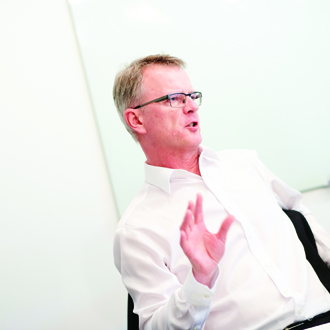
niceroundtable june 2017 330×330
Dr Keith Hopcroft
DH All of us know that different patients have totally different thresholds for what they want. For some, a one-in-10 risk is: ‘Well forget it’. For others it is: ‘Oh.’
RP So much could be done before the consultation. If somebody with a sore throat picks up an iPad, enters the symptoms and is led through a NICE-approved decision-making tool before they see me, they are prepped for the conversation. The technology is there; it just has to be clinically robust.
KH The worry then is you miss the point of why has the patient has come. It’s easy to say ‘on the CENTOR tool you’ve got tonsillitis, here are some antibiotics’, but they might have come because they’ve got a friend who’s got throat cancer and that’s why they haven’t bothered to treat themselves. That’s what worries me.
PB I agree. Nowadays, trainees are coming through and there are so many trust policies that they have to follow, so they’re not really thinking.
KH We’re training a generation to not think by using guidelines.
DH This is not a criticism of the doctors themselves, but they are being trained to fulfil a service role. Clinical freedom isn’t about doing what you want to do, it’s about having the ability to bend the rules in the patient’s interest.
NP Where does that come from, is that from the GP training itself?
RP I may be shot at dawn, given I’m at the RCGP, but under the old system I felt the pressure to learn everything because anything could walk through the door. Now I see people learning to the curriculum. ‘Oh, I’ve done this many smears and I can stop.’ Not, ‘I need to do a smear on anybody who can breathe because one day I’ll have to do it on my own.’
DH I’m always wary of demonising a generation. The current generation are brighter than most preceding generations, they just need permission and support to work in the correct way.
PB I wasn’t saying they were being lazy, but a lot of them feel pressure to follow certain guidelines and policies.
JT Just before we started I looked up the Academy of Royal Colleges’ Choosing Wisely website and it suggested five questions patients might ask about their illness. ‘Do I really need this test, treatment or procedure?’ ‘What are the risks or downsides?’ ‘What are the possible side-effects?’ ‘Are there similar safer options?’ and ‘What will happen if I do nothing?’ I will probably add to that, ‘What are the benefits of this procedure?’ I’m not sure guidelines are very good in the main about answering those questions. If we’re going to talk about treating individuals, we need to know the effect sizes and the risk of harms and all of that. If we got better at that it would transform how people relate to guidelines.
KH I must see different patients from you. It’s rare that I see a patient with a problem that I can apply a guideline to. I’ve got all sorts of other things coming at me from all sorts of directions. The average diabetes patient that I see doesn’t need their blood pressure, cholesterol or glycaemic control sorted, they need their depression dealt with. They’re depressed because they’ve got all of this, they’re on all these drugs and they’re going to all these appointments and I worry that we forget that.
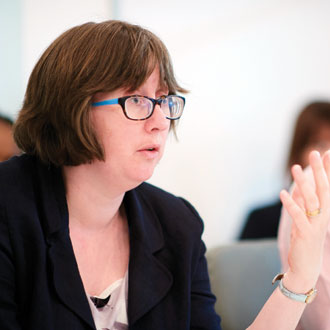
NICE round table, June 2017 – 330×330
Dr Rebecca Payne
DH It’s not just guidelines that are the problem here. It’s the whole structure of healthcare over the past 50 years, which has been based around single conditions. With some of the new genomics, patient populations are going to get smaller and expertise is going to get more localised. But those patients are going to have six comorbidities and we’re going to need an expert generalist, supported by consultants, who don’t take over. That feels like the model that we’re heading for.
RP That’s a very medical model. Around 70% of illness is caused by social factors. People are ill because their marriage is falling apart and their house is leaking. Guidelines send us down a clinical route for something that isn’t medical in the first place.
NP Is there an issue with the evidence that’s being looked at? So many people are excluded from randomised controlled trials. How do we get around that?
JR It is a challenge, particularly when you get to social care and public health. RCTs are not as applicable and we need to be thinking about how guidelines can be more supportive.
RP Here’s an example from the Valleys – a 19-year-old lad, depressed. He hasn’t got five GCSEs so he’s not going to get a job. I’d like a guideline that says he should be prioritised by the job centre to get him into work now and change his life trajectory.
KH That’s what GPs are for, to recognise that people don’t fit into a guideline.
RP But that carries no weight with the job centre and they’ll send him back for a sick note.
JR That’s where the model of Bromley-by-Bow comes in, where services are on one site and people can be signposted to health care, social care or the third sector. But I know that’s not where we’re at across the country.
KH We don’t want a guideline for everything do we?
RP We want something to whack the job centre over the head with – ‘don’t send him back to me, the evidence shows you can make the difference’.
DH We don’t want a guideline for everything. The key skill of a GP is the art of knowing what to do when you don’t know what to do.
NP Often sensible guidelines are let down by the presentation. You may remember NICE’s antibiotic prescribing guideline, where NICE said at a press conference that GPs who did not follow it should get a GMC referral.
DH That was not part of the guideline, I’ll be absolutely clear.
NP It wasn’t. It was a very good guideline, but the comments coloured its reception.
KH There’s something interesting about the language. NICE has created a structure that is really restrictive. The chronic kidney disease guideline says to keep systolic blood pressure below 140, target range 120-139 and diastolic below 90. Nearly all GPs I know interpreted this as a BP target of about 130ish. But I’ve met one of the consultants on this guideline committee, who said it meant something else: ‘A blood pressure below 140 is fine, take care not to go below 120 because then mortality increases’. That’s a different message.
DH One of the important things we’re doing is setting up a GP reference panel, giving GPs the opportunity to tell us if our guidelines need improving. Julian’s one of our moderators. It’s pointless us pumping out things that are too complex or worded badly or whatever.
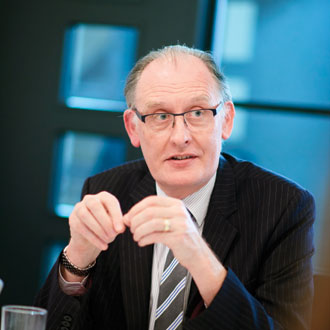
NICE round table, June 2017 – 330×330
Dr Andrew Green
RP Most of the interaction with guidelines is second hand – going to an update course, reading about it in Pulse. In the real world, you have to have stuff presented to you more than once before you change your practice.
KH The best kind of guidance is where you feel you don’t have to change anything at all. That sounds flippant, but establishing what’s going on already in general practice as part of evidence gathering is important.
JR We do try very hard to make sure we’ve got GPs involved in any topic that’s relevant to planning care.
KH But isn’t the ‘excellence’ bit of the NICE title a hostage to fortune? I don’t aspire to excellence, I aspire to adequacy. A case in point is the asthma draft guidelines, which are crazy. Any GP looking at that could have told you it’s not going to work.
JR We’ve paused the asthma guideline to see how to make workable and still improve care for those with asthma.
DH This was a classic example where we got a lot of feedback and changed our minds. Some journalists would describe this as a U-turn. But it’s not. I understand the point you are making, but if I went to see my surgeon and he said he was aspiring to ‘good enough’, I’d probably go somewhere else.
KH But to get to the surgeon you see the GP who is good enough?
DH No, I think you’re denigrating yourself. I suspect you bring excellence, but not the excellence as defined by a secondary care model. I also think that the moment we start to ask our population to accept anything other than the excellence we should aspire to, that’s the end of the health service. If it was my family, wife, kids, grandchildren I would want them to have excellent care.
How could guidelines be improved?
AG Guidelines should be a stimulus for thought, not a substitute for it.
JT Instead of guidelines, it should be a rich evidence resource that we can turn to when we need it.
KH Ditch the word guidelines, give us information.
RP Guidelines are fine, it’s the real world that’s the problem.
PB Doctors should be allowed the freedom and be supported in making those decisions by management and various other authorities.
DH Engaging GPs as much as we can in our work.
JR Hearing what GPs are saying and supporting them to deliver the best care possible
Visit Pulse Reference for details on 140 symptoms, including easily searchable symptoms and categories, offering you a free platform to check symptoms and receive potential diagnoses during consultations.











